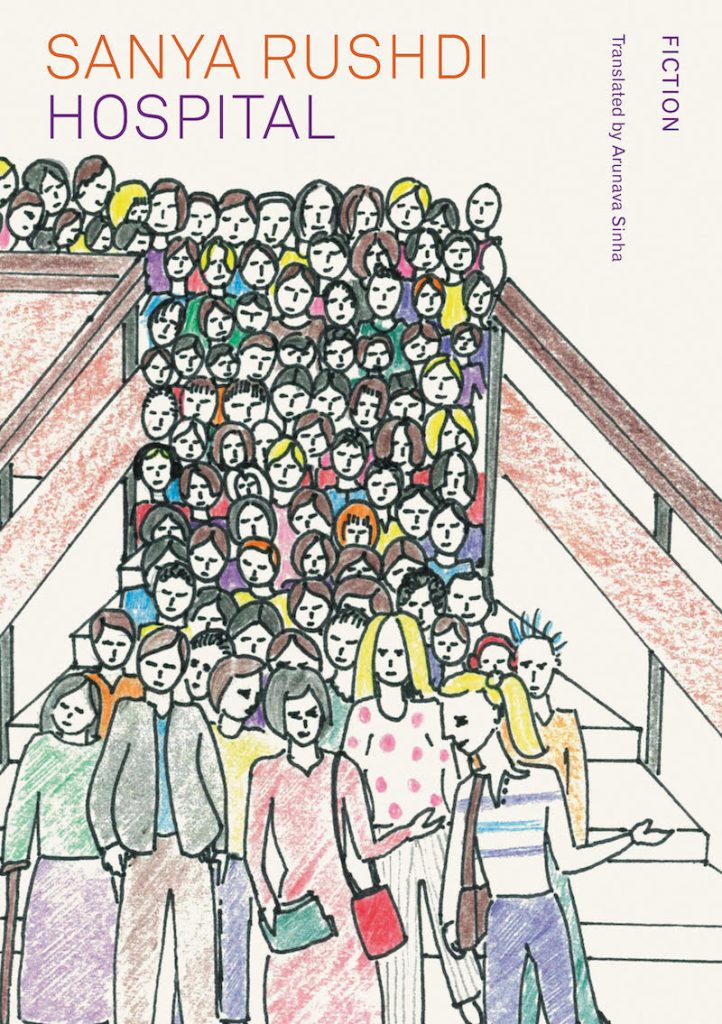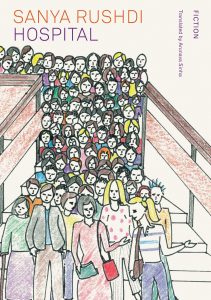Illustrations by Sanya Rushdi to accompany her debut novel, Hospital
Sanya Rushdi, the author of Hospital – a first-person literary account of a young woman with psychosis, and her interactions with family, institutional staff, authority figures, and those like her also diagnosed ‘insane’ – is also the artist behind the book’s cover illustration.
The scene depicted corresponds to a passage of text from page 46 of the book, which describes ‘a rush of boys and girls’ coming down the stairs of a library, where narrator and protagonist Sanya is at work. This scene occurs just before our narrator is sent (seemingly without warning) to emergency, and then shortly afterwards (under police escort) to a psychiatric hospital.
This latter scene was also illustrated by Rushdi, along with a series of others from the book. Her drawings are published here for the first time, with corresponding passages as supplied by Rushdi.
The Library
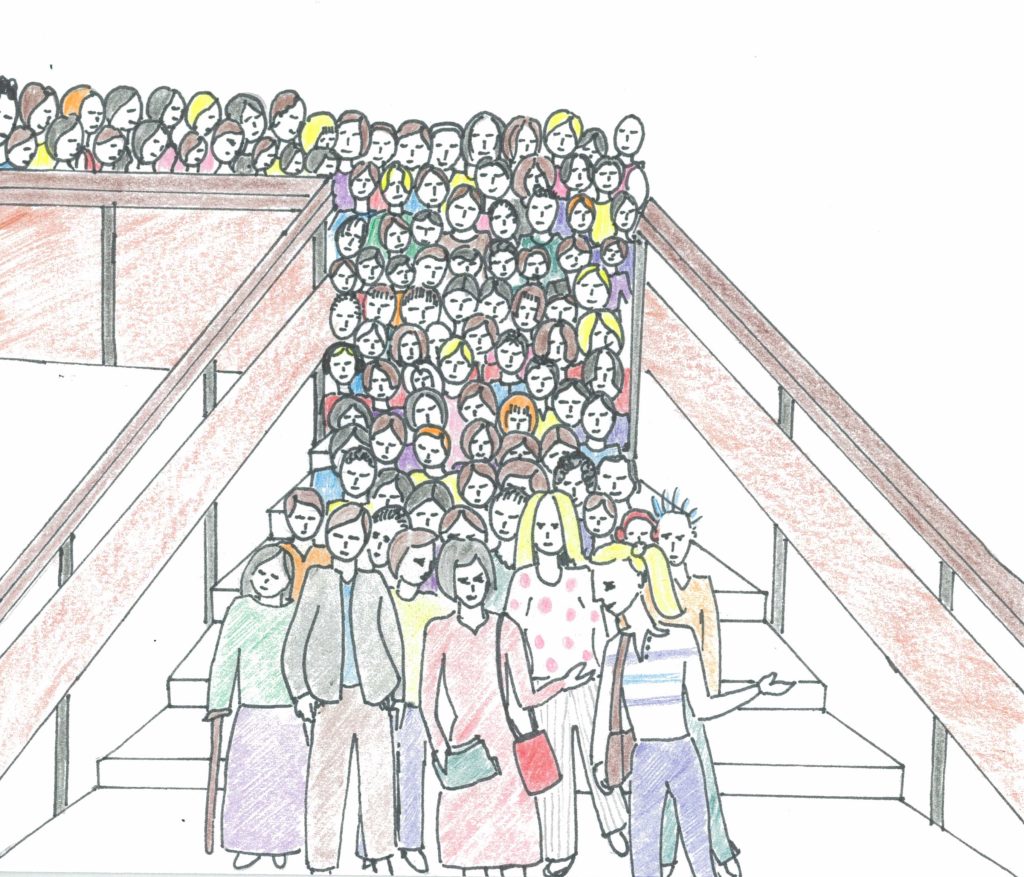
‘…a rush of boys and girls come down the library stairs. This time they don’t seem to be in a hurry to go home, it seems something has struck them so deeply that they’re about to join a protest on the streets.’ (p.46)
The Police Car
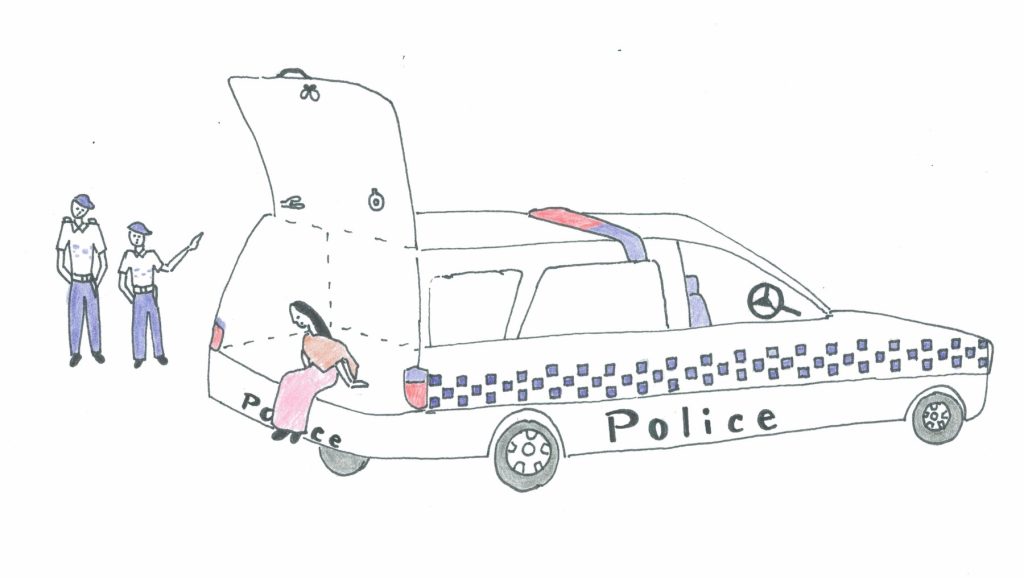
‘I follow their instructions to sit at the edge of the boot and then slide my way backward. The paint has come off the section along which I slide, revealing the metal underneath. Who knows how many people have got into this car this way!’ (p.40)
Two Benches in the Courtyard
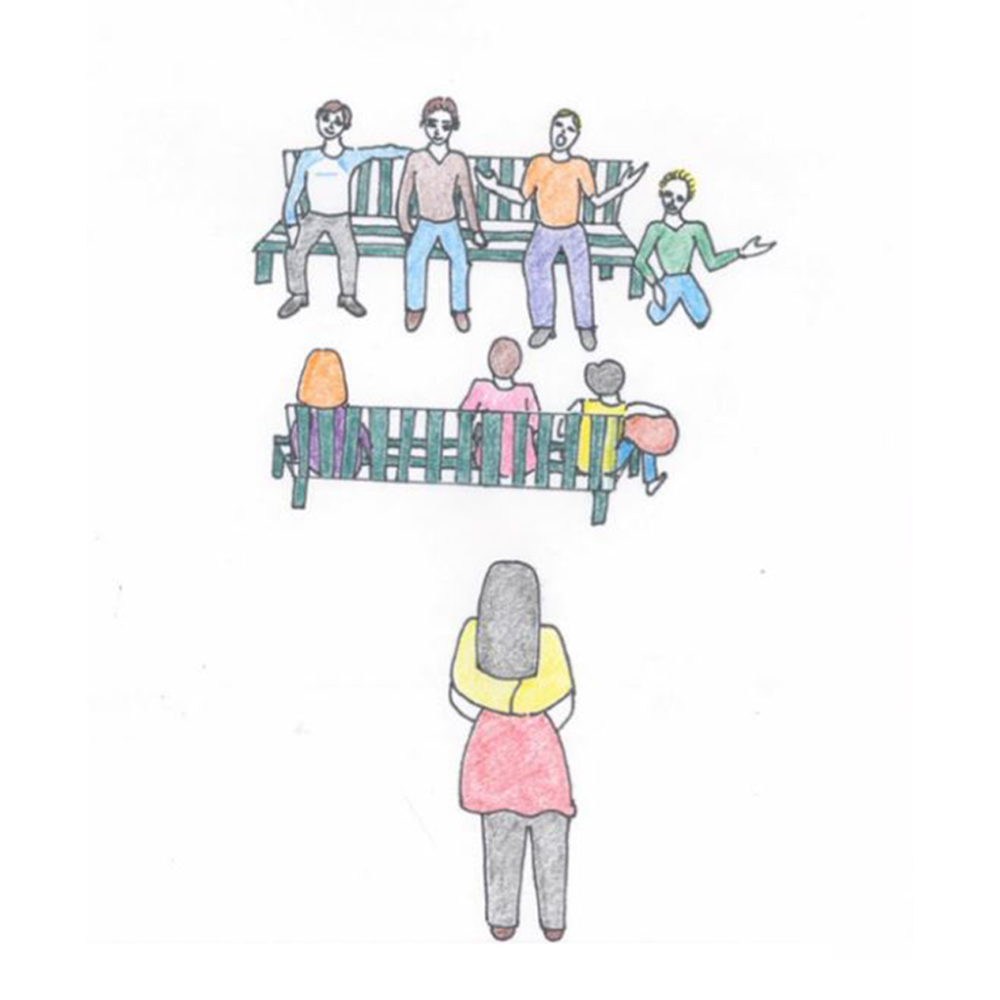
‘They’re occupying the two benches in the middle, with Daniel, Mick and Dominic on one, and Glen next to them on the ground, and Michael and some others on the bench opposite theirs, which is why they haven’t seen me come in. Who knows when Michael came out here! Glen is looking straight at me and singing with a big smile. Dominic is also singing with his eyes on me. There’s so much passion in his voice, and Michael is playing the guitar so well – I flash them a smile. Dominic is singing:
When I find myself in times of trouble
Mother Mary comes to me…’ (p. 48)
Bridge and Lilies Drawing
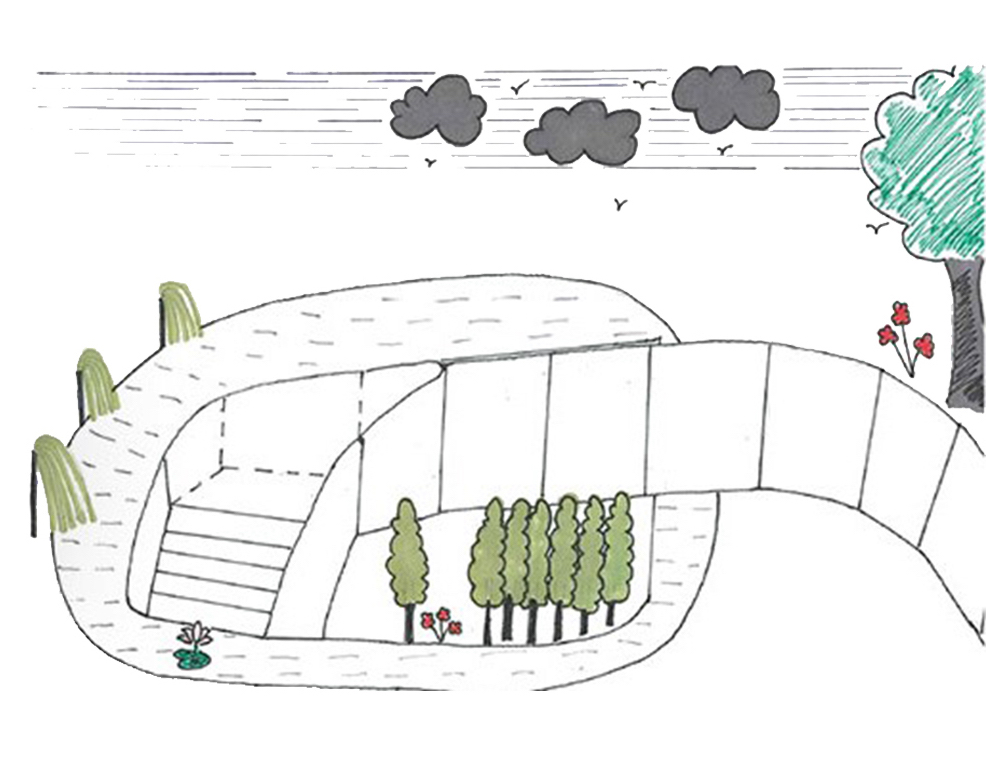
‘So I sit down with Monet’s Bridge Over a Pond of Water Lilies. At first I decide to sketch what Monet had painted, but then I see my drawing move in a different direction – a pond, within it a small island connected to the mainland by a footbridge. What’s more, the bridge looks a bit like a train, and its last step leads to a lotus. There’s just the one lotus in the pond, which, because of its long stalk, sometimes wanders off towards the casuarina trees to the left of the bridge, sometimes towards the willow trees to its right, and sometimes close to the bridge itself. Half of a large tree on the mainland can be seen in the distance. The plants around it are flowering, the birds are flying near the clouds. Flowers are blossoming between two trees on the island too.’ (p.1)
The Fence
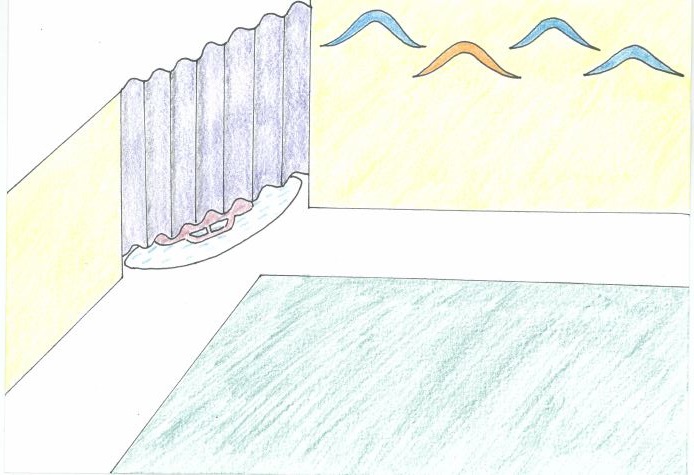
‘One section of the fence around this courtyard is covered with
corrugated tin. Beneath this section is a trench – when rainwater
gathers in it, reflections of passing cars appear on the surface.
Clearly the main road runs just outside the fence, which means
anyone can escape if they try. Perhaps that’s why unsupervised
entry to this courtyard is not allowed. I don’t tell Ing about this,
I only walk up to the windows in the dining hall from where the
small courtyard is visible, take a seat and reflect on the beauty of
the fence. The concrete wall next to the section of corrugated tin
is painted with blue and orange waves, like the reflection of the
setting sun in the water. When it rains, there’s real water in the
trench beneath, does this count as magic realism?’ (p.18)
The Magpies
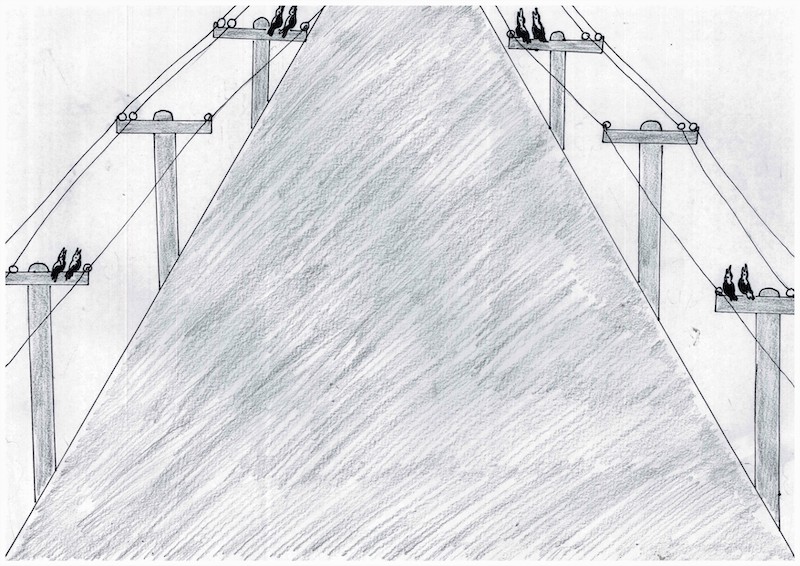
‘I continue walking in the sunlight, switching footpaths every
now and then. Passing another pole, suddenly I hear magpies
again. I look up to discover, oh my god, two more magpies perched
just like the ones I saw earlier, warbling, their beaks held up to the
sky. A little later I see the same sight again, and then over and over
again as I walk back.’ (p.113)
Hospital by Sanya Rushdi was published in June 2023. It was translated from Bengali by Arunava Sinha.
